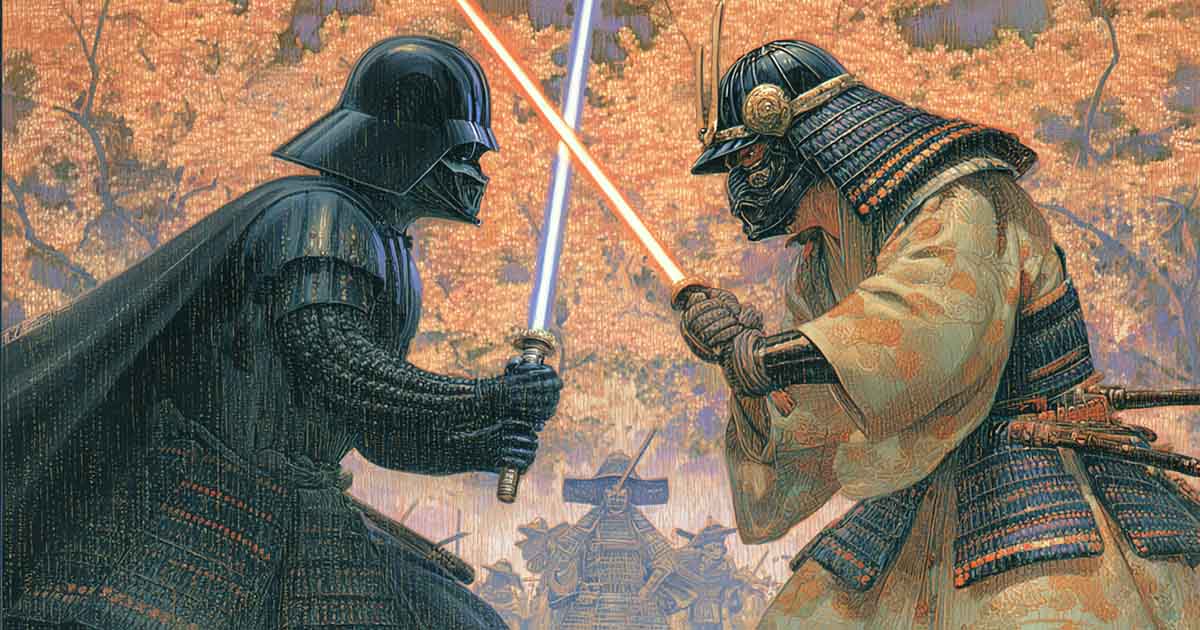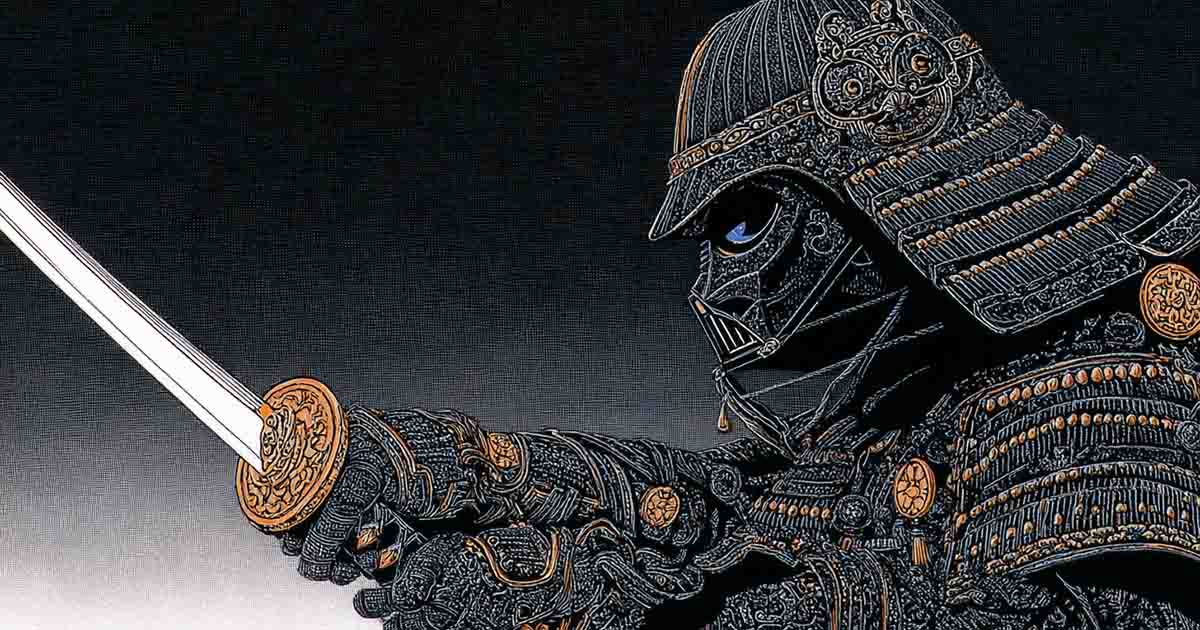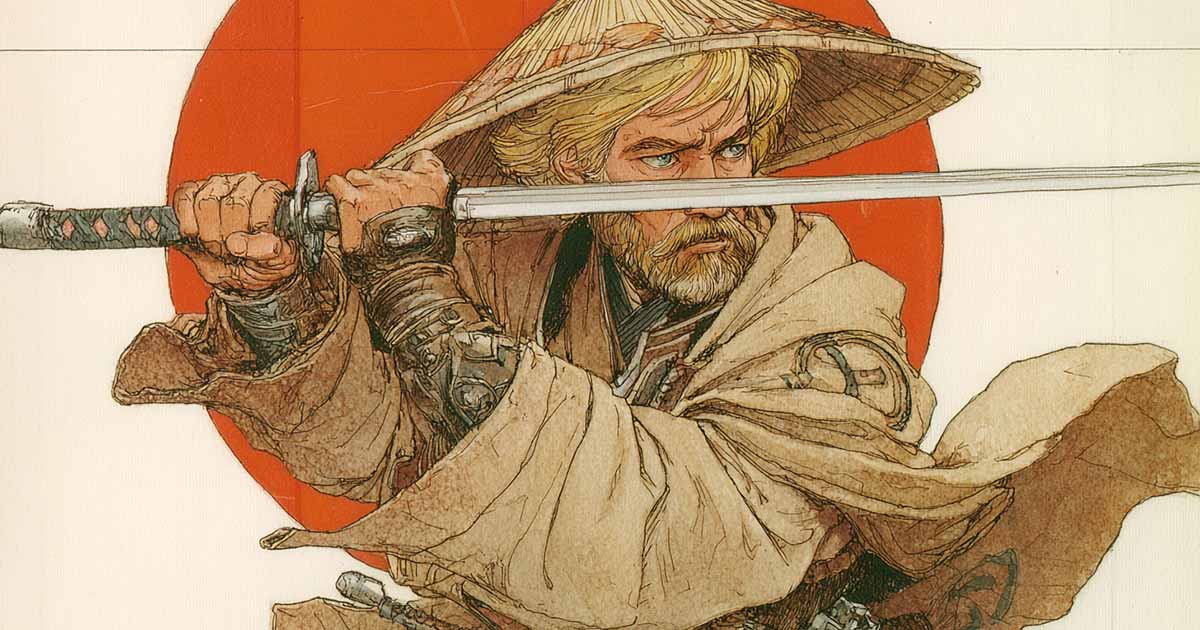"Star Wars" and the Samurai Influence
Discover how George Lucas shaped the first lightsaber duel in "Star Wars" after samurai films like "The Hidden Fortress," giving Obi-Wan and Vader’s clash its deliberate style.

When Obi-Wan Kenobi lifted his blue blade against Darth Vader in "Star Wars" (1977), audiences were introduced to a weapon that instantly became legend. But the duel itself moved slowly, with a careful rhythm that puzzled younger viewers who later saw faster, flashier battles.
The truth is that George Lucas wanted this first lightsaber clash to look less like a swashbuckling sword fight and more like a scene lifted straight from a Japanese samurai drama.
Kurosawa’s Influence on a Galaxy Far Away
Lucas had long admired the films of Akira Kurosawa, and "The Hidden Fortress" (1958) was particularly influential. Kurosawa’s warriors never fought recklessly. They carried themselves with deliberate grace, conserving energy until the decisive strike.

Lucas encouraged Alec Guinness and David Prowse to study these films and bring that same gravity to their duel. The result was not a dance of agility but a contest of patience. Every move appeared to carry weight, as though two masters measured one another across decades of shared history.
The Weight of the Lightsaber
The physical props contributed to the slow pace. The original lightsaber blades were fragile rods covered in reflective material. Technicians later added the glowing effect in postproduction. Because the rods could snap with too much force, the actors had to keep their movements controlled.
Prowse, a bodybuilder in heavy armor, could hardly whirl the saber like a fencer’s foil. Guinness, older and more restrained by nature, moved with the calm precision of a seasoned knight. These limitations became strengths, creating a sense of solemn ritual.

There is also the matter of what Lucas wanted the lightsaber to represent. In early drafts, he described it as a “laser sword” and compared it to the weapon of a medieval knight. To him, it was less a gadget than a symbol of honor and tradition.
By slowing the duel down, he allowed the audience to see the lightsaber as something sacred. The first clash of blue and red light is not about acrobatics but about the weight of history, of teacher and pupil meeting again after betrayal.
From Ritual to Spectacle
Later films shifted the style. "The Empire Strikes Back" (1980) gave us a duel that was still measured, but faster and filled with more physicality. "Return of the Jedi" (1983) pushed the pace further, portraying Luke as a man caught between calm control and raw emotion.
The prequel trilogy went to the other extreme, with lightsaber battles that looked like high-speed martial arts ballets. By then, technology and athletic stuntwork allowed for dazzling choreography.
And yet the original fight between Obi-Wan and Vader remains unlike any other in the saga. It carries a quiet dignity. The slowness is not weakness but purpose, a cinematic echo of Kurosawa’s warriors waiting for the right moment to strike.
It is a fight staged not for thrills, but for meaning. In a galaxy filled with spaceships, monsters, and explosions, that duel reminds us that the greatest battles are often fought with patience, tradition, and respect for the past.

